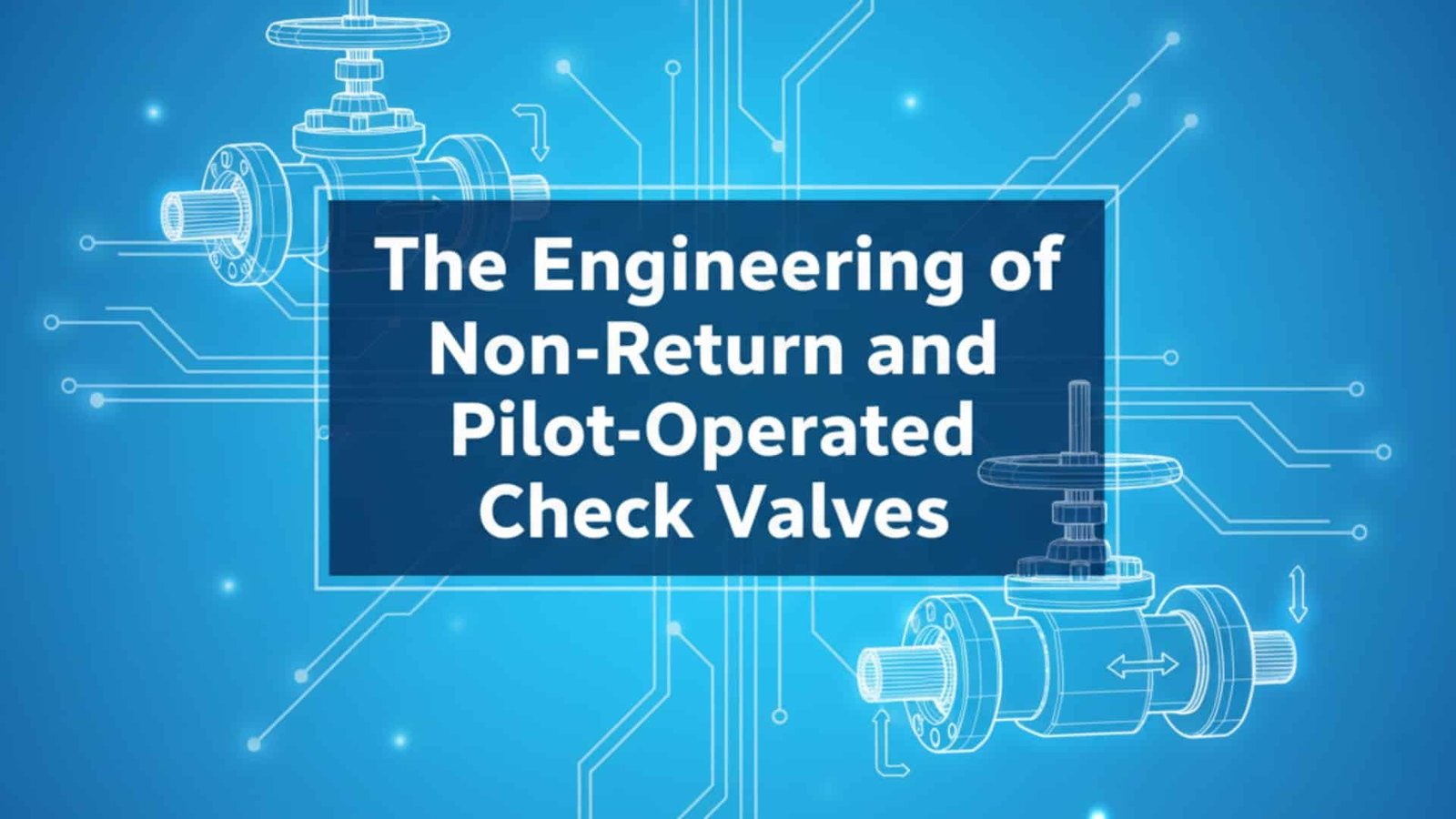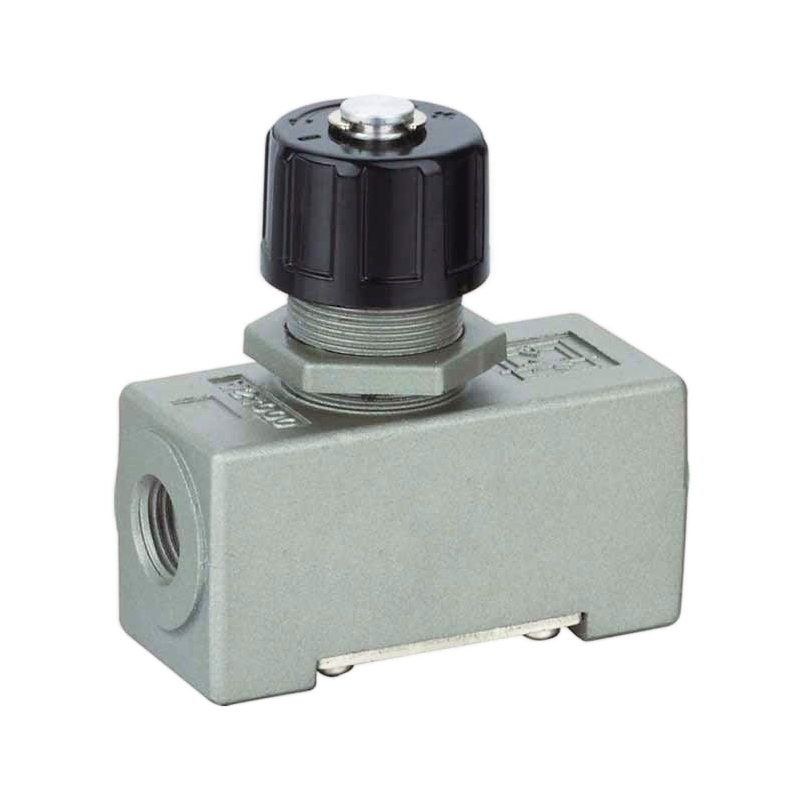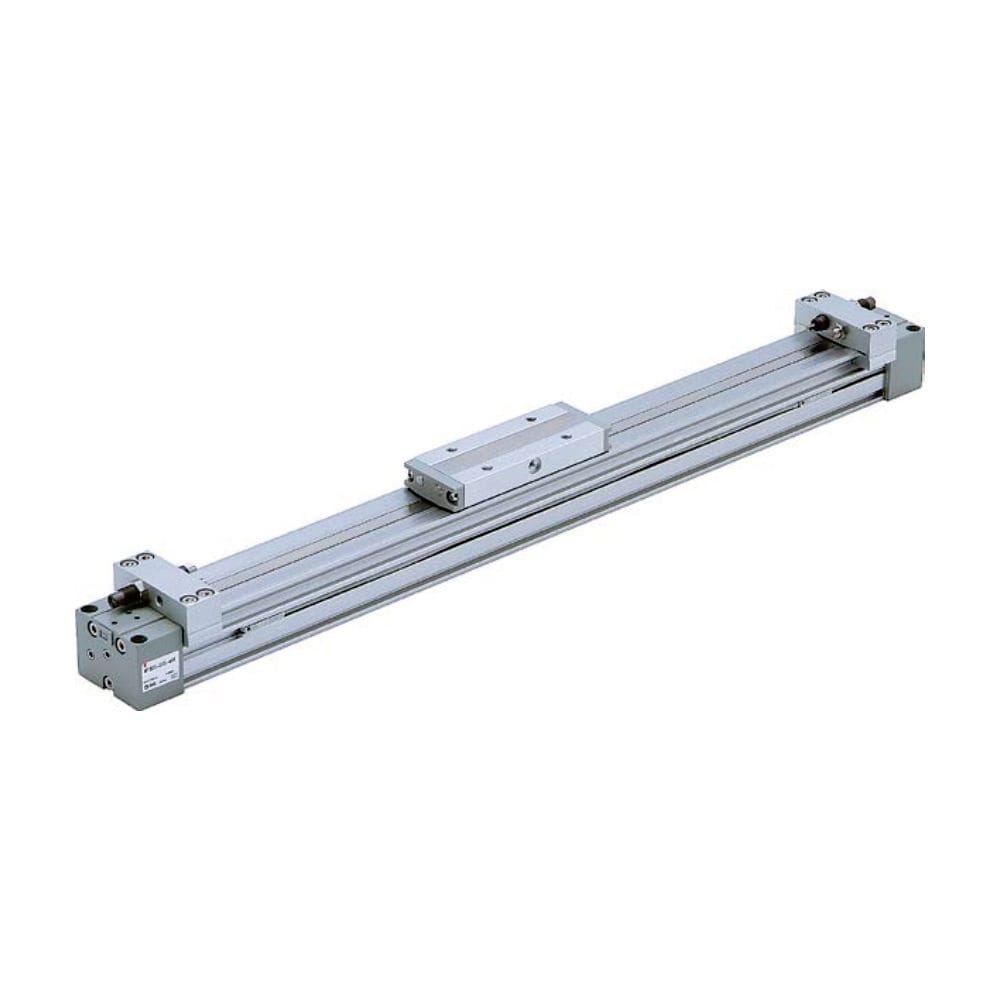Industrial systems face catastrophic failures when fluid flows reverse unexpectedly, causing equipment damage and costly downtime. Traditional check valves often fail under high pressure or create excessive pressure drops that reduce system efficiency. Engineers need reliable solutions that prevent backflow while maintaining optimal performance.
Backventiler och pilotstyrda backventiler ger viktig flödeskontroll genom att förhindra omvänt flöde genom fjäderbelastade mekanismer och pilotstyrda öppningssystem, vilket säkerställer systemsäkerhet, skyddar utrustning från skador och upprätthåller optimala tryckförhållanden i pneumatiska och hydrauliska kretsar.
Last month, I received an urgent call from Marcus, a maintenance engineer at a textile manufacturing plant in North Carolina, whose rodless cylinder system was experiencing severe pressure fluctuations due to inadequate check valve performance. 🏭
Innehållsförteckning
- What Are the Key Differences Between Non-Return and Pilot-Operated Check Valves?
- How Do You Select the Right Check Valve for Rodless Cylinder Applications?
- What Are the Common Engineering Challenges with Check Valve Design?
- How Do You Troubleshoot Check Valve Performance Issues?
What Are the Key Differences Between Non-Return and Pilot-Operated Check Valves?
Understanding the fundamental differences between these valve types is crucial for selecting the optimal solution for your pneumatic system requirements.
Non-return check valves use spring-loaded mechanisms for automatic flow control, while pilot-operated check valves combine spring operation with external pilot signals for controlled opening, offering greater flexibility and precise flow management in complex pneumatic circuits.
Grundläggande funktionsprinciper
Both valve types serve essential functions in pneumatic systems, but their operating mechanisms differ significantly in complexity and control capabilities.
Non-Return Check Valve Operation
- Spring-loaded design: Automatic opening based on tryckskillnad1
- Simple mechanism: Minimal moving parts for reliability
- Pressure-activated: Opens when inlet pressure exceeds spring force
- Self-closing: Automatically prevents reverse flow
Pilot-Operated Check Valve Features
- Dual control system: Spring mechanism plus pilot control
- External signal: Pilot pressure overrides spring force
- Controlled opening: Precise timing of valve operation
- Enhanced functionality: Allows reverse flow when needed
Jämförelse av prestanda
| Funktion | Non-Return Check Valve | Pilot-Operated Check Valve |
|---|---|---|
| Opening pressure | 0.5-2 PSI | 0.5-2 PSI (spring only) |
| Control method | Automatic | Manual/automatic |
| Reverse flow | Blocked always | Controllable |
| Komplexitet | Enkel | Måttlig |
| Kostnad | Lägre | Högre |
| Tillämpningar | Grundläggande skydd | Complex circuits |
Design Specifications
Our Bepto check valves feature:
- Tryckklassning: Up to 150 PSI working pressure
- Temperaturområde: -20°C to +80°C operating temperature
- Flödeskapacitet: Optimized for rodless cylinder applications
- Material options: Aluminum, stainless steel, and brass bodies
Application Advantages
Non-return check valves excel in:
- Simple protection: Basic backflow prevention
- Kostnadskänsliga tillämpningar: Budgetvänliga lösningar
- Behov av hög tillförlitlighet: Färre felkällor
- Underhållsfri drift: Inga externa kontroller krävs
Pilotstyrda backventiler ger:
- Flexibilitet i kretsen: Möjlighet till kontrollerat omvänt flöde
- Systemintegration: Kompatibel med komplexa styrsystem
- Exakt drift: Exakt kontroll av timing
- Avancerad funktionalitet: Flera olika driftlägen
Marcus textilfabrik hade problem med sitt stånglösa cylinderpositioneringssystem på grund av otillräcklig prestanda hos backventilerna. De befintliga ventilerna orsakade:
- Instabilt tryck: Fluktuerande systemtryck
- Position drift: Cylindrar som förlorar positionsnoggrannhet
- Energislöseri: Överdrivet tryckfall
- Frekvent underhåll: Ventilfel var 3:e månad
Vi rekommenderade våra pilotstyrda backventiler Bepto, som levererade:
- Stabilt tryck: Konsekvent systemprestanda
- Exakt positionering: Förbättrad cylindernoggrannhet
- Energieffektivitet: 20% minskning av luftförbrukningen
- Förlängd livslängd: 18 månader utan underhåll
Systemet fungerar nu med exceptionell tillförlitlighet och precision. ⚡
How Do You Select the Right Check Valve for Rodless Cylinder Applications?
Rätt val av ventil säkerställer optimal prestanda för stånglösa cylindrar samtidigt som systemskador undviks och driftseffektiviteten bibehålls.
Välj backventiler baserat på systemets tryckkrav, behov av flödeskapacitet, monteringskonfiguration och styrkomplexitet, med hänsyn till faktorer som spricktryck, flödeskoefficient och integrering med befintliga pneumatiska kretsar för att optimera driften av den stånglösa cylindern.
Kritiska urvalsparametrar
Flera tekniska faktorer avgör det optimala valet av backventil för applikationer med stånglösa cylindrar och systemkrav.
Överväganden om tryck
- Arbetstryck: Anpassa ventilens nominella värde till systemtrycket
- Sprickbildningstryck: Minimera tryckfallet för ökad effektivitet
- Tryckskillnad: Beakta förhållanden uppströms/nedströms
- Säkerhetsmarginal: 25% över maximalt arbetstryck
Krav på flöde
- Cylinderhastighet: Flödeskapaciteten påverkar cykeltiderna
- Luftförbrukning: Ventildimensionering påverkar effektiviteten
- Tryckfall: Minimera förluster för optimal prestanda
- Flödeskoefficient (Cv)2: Anpassa ventilkapaciteten till systemets behov
Riktlinjer för urval
För stånglösa standardcylindrar
- Borrstorlek 32-63 mm: Backventiler i storlek 1/8″ till 1/4″
- Borrstorlek 80-125 mm: Backventiler i storlek 3/8″ till 1/2″
- Borrhålsstorlek 160 mm+.: Backventiler i storlek 3/4″ till 1″
- Höghastighetsapplikationer: Pilotstyrda ventiler rekommenderas
För precisionstillämpningar
- Positionens noggrannhet: Pilotstyrda ventiler för exakt styrning
- System med flera positioner: Förbättrade kontrollmöjligheter behövs
- Servotillämpningar: Krav på lågt sprickbildningstryck
- Rena miljöer: Konstruktion i rostfritt stål föredras
Fördelar med Bepto-ventil
| Tillämpningstyp | Rekommenderad ventil | Viktiga fördelar |
|---|---|---|
| Grundläggande positionering | Non-return check | Cost-effective, reliable |
| Precisionsstyrning | Pilotmanövrerad | Enhanced accuracy |
| Cykler med hög hastighet | Low-pressure check | Minimal flow restriction |
| Tuffa miljöer | Rostfritt stål | Korrosionsbeständighet |
Överväganden om integration
- Monteringsalternativ: Inline, manifold, or cartridge mounting
- Portanslutningar: Thread types and sizes
- Kontrollgränssnitt: Pilot signal requirements
- Tillträde för underhåll: Service and replacement ease
System Compatibility
- Existing components: Integration with current valves
- Styrsystem: PLC and automation compatibility
- Pressure sources: Pilot supply requirements
- Miljöfaktorer: Temperature and contamination resistance
Sarah, a design engineer from a German automotive parts manufacturer, needed to optimize her rodless cylinder control system for faster production cycles while maintaining positioning accuracy.
Her specific requirements included:
- Cycle time reduction: 30% faster operation needed
- Positionens noggrannhet: ±0.1mm tolerance required
- Kostnadsoptimering: Budget constraints for upgrades
- Reliability improvement: Reduce maintenance downtime
Our selection process delivered:
- Optimal valve choice: Pilot-operated check valves selected
- Performance gains: 35% faster cycle times achieved
- Accuracy improvement: ±0.05mm positioning accuracy
- Kostnadsbesparingar: 15% lower total system cost
The optimized system has exceeded all performance targets for 8 months. 🎯
What Are the Common Engineering Challenges with Check Valve Design?
Understanding design challenges helps engineers select appropriate solutions and avoid common pitfalls in check valve applications.
Common engineering challenges include pressure drop optimization, chattering prevention, contamination resistance, and temperature stability, requiring careful material selection, spring design, and flow path engineering to ensure reliable long-term operation in demanding applications.
Design Challenge Analysis
Modern check valve design must address multiple technical challenges while maintaining cost-effectiveness and manufacturing simplicity.
Pressure Drop Minimization
- Flow path design: Streamlined internal geometry
- Valve sizing: Adequate flow area for application
- Spring selection: Minimum force for reliable sealing
- Seat design: Optimized sealing surface geometry
Chattering Prevention
- Damping mechanisms: Controlled valve movement
- Flow stability: Consistent pressure conditions
- Spring characteristics: Proper force/deflection curves
- Valve mass: Optimized moving component weight
Engineering Solutions
Material Selection Challenges
- Korrosionsbeständighet: Suitable materials for environment
- Slitageegenskaper: Long-term durability requirements
- Temperaturstabilitet: Performance across operating range
- Kemisk kompatibilitet: Resistance to system fluids
Överväganden om tillverkning
- Tolerance control: Precise dimensional requirements
- Ytfinish: Sealing surface quality
- Assembly methods: Consistent manufacturing processes
- Kvalitetskontroll: Testing and validation procedures
Bepto Design Innovations
| Utmaning | Traditional Solution | Bepto Innovation |
|---|---|---|
| Tryckfall | Larger valve size | Optimized flow geometry |
| Chattering | Heavy damping | Precision spring design |
| Kontaminering | Frequent cleaning | Self-cleaning design |
| Temperatur | Material limitations | Advanced alloys |
Avancerade designfunktioner
Our Bepto check valves incorporate:
- Optimized flow paths: Minimal pressure loss design
- Anti-chatter technology: Stable operation across flow ranges
- Motståndskraft mot kontaminering: Self-cleaning valve seats
- Temperaturkompensation: Stable performance across ranges
Applikationsspecifika lösningar
- Rodless cylinder integration: Optimized for pneumatic systems
- Högfrekvent drift: Fatigue-resistant designs
- Precisionstillämpningar: Low-hysteresis characteristics
- Tuffa miljöer: Protected internal components
Robert, a project engineer from a Canadian food processing equipment manufacturer, was facing recurring issues with check valve performance in his rodless cylinder systems operating in washdown environments.
His engineering challenges included:
- Contamination issues: Food particles causing valve sticking
- Krav på rengöring: Frequent sanitization needs
- Corrosion problems: Aggressive cleaning chemicals
- Reliability demands: Zero tolerance for production stops
Our engineering solution provided:
- Konstruktion i rostfritt stål: Complete corrosion resistance
- Self-cleaning design: Contamination-resistant operation
- Sanitary connections: Easy cleaning and maintenance
- Förlängd livslängd: 2-year maintenance intervals
The system has operated flawlessly through 18 months of demanding service. 💪
How Do You Troubleshoot Check Valve Performance Issues?
Systematic troubleshooting approaches minimize downtime and ensure optimal check valve performance in critical pneumatic applications.
Troubleshoot check valve issues by checking cracking pressure, verifying flow direction, testing pilot signals, and examining contamination levels using proper diagnostic procedures and measurement tools to identify root causes and implement effective solutions.
Common Problem Identification
Understanding typical failure modes enables quick diagnosis and resolution of check valve performance issues.
Performance Symptoms
- Överdrivet tryckfall: Flow restriction beyond specifications
- Reverse flow leakage: Inadequate sealing performance
- Långsam respons: Delayed opening or closing
- Chattering operation: Unstable valve behavior
Diagnostiska procedurer
- Tryckprovning: Verify cracking and sealing pressures
- Flödesmätning: Check actual vs. rated flow capacity
- Visuell inspektion: Examine valve condition and installation
- Systemanalys: Review operating conditions and requirements
Troubleshooting Process
Step 1: Initial Assessment
- Document symptoms: Record all observed issues
- Review history: Check maintenance and operation logs
- Verify installation: Confirm proper mounting and connections
- Säkerhetsrutiner: Implement proper lockout/tagout3
Step 2: Performance Testing
- Cracking pressure test: Verify opening pressure
- Sealing test: Check reverse flow prevention
- Flow capacity test: Measure actual flow rates
- Response time test: Check opening/closing speed
Felsökningsguide
| Symptom | Sannolik orsak | Lösning |
|---|---|---|
| High pressure drop | Undersized valve | Install larger capacity valve |
| Reverse flow | Worn sealing surfaces | Replace valve or sealing elements |
| Långsam respons | Kontaminering | Clean or replace valve |
| Chattering | Improper sizing | Adjust system pressure or valve size |
Förebyggande underhåll
- Regular inspection: Scheduled performance checks
- Kontroll av kontaminering: Proper filtration systems
- Övervakning av tryck: System pressure verification
- Byte av komponent: Proactive part renewal
Bepto Support Services
We provide comprehensive troubleshooting support:
- Technical assistance: Expert diagnostic support
- Reservdelar: Fast delivery of genuine components
- Utbildningsprogram: Maintenance staff education
- Systemoptimering: Performance improvement recommendations
Jennifer, a maintenance supervisor from a pharmaceutical packaging facility in Switzerland, was experiencing intermittent check valve failures that were disrupting critical production schedules.
Her troubleshooting challenges included:
- Intermittent problems: Difficult to diagnose issues
- Kritiska tillämpningar: Zero tolerance for failures
- Komplexa system: Multiple interacting components
- Regulatorisk efterlevnad: FDA validation requirements
Our troubleshooting approach delivered:
- Systematic diagnosis: Comprehensive problem analysis
- Root cause identification: Contamination source located
- Permanent solution: Upgraded filtration system installed
- Stöd för validering: Complete documentation provided
The system has operated without failures for 12 months following our intervention. ⚡
Slutsats
Proper engineering and selection of non-return and pilot-operated check valves ensures reliable pneumatic system operation, optimal rodless cylinder performance, and long-term cost savings through reduced maintenance and improved efficiency.
FAQs About Check Valves
Q: What is the typical cracking pressure for pneumatic check valves?
Most pneumatic check valves have cracking pressures between 0.5-2 PSI, with low-pressure versions available for sensitive applications requiring minimal pressure drop.
Q: Can pilot-operated check valves work without pilot pressure?
Yes, pilot-operated check valves function as standard check valves when no pilot signal is applied, using only their internal spring mechanism for operation.
Q: How do you prevent check valve chattering in high-flow applications?
Prevent chattering by proper valve sizing, maintaining stable upstream pressure, using appropriate damping, and selecting valves with optimized spring characteristics for your flow range.
Q: What maintenance is required for pneumatic check valves?
Regular inspection for wear, contamination cleaning, pressure testing, and replacement of sealing elements based on operating conditions and manufacturer recommendations.
Q: Are stainless steel check valves worth the extra cost?
Stainless steel valves provide superior corrosion resistance and longer service life in harsh environments, making them cost-effective for demanding applications despite higher initial cost.





